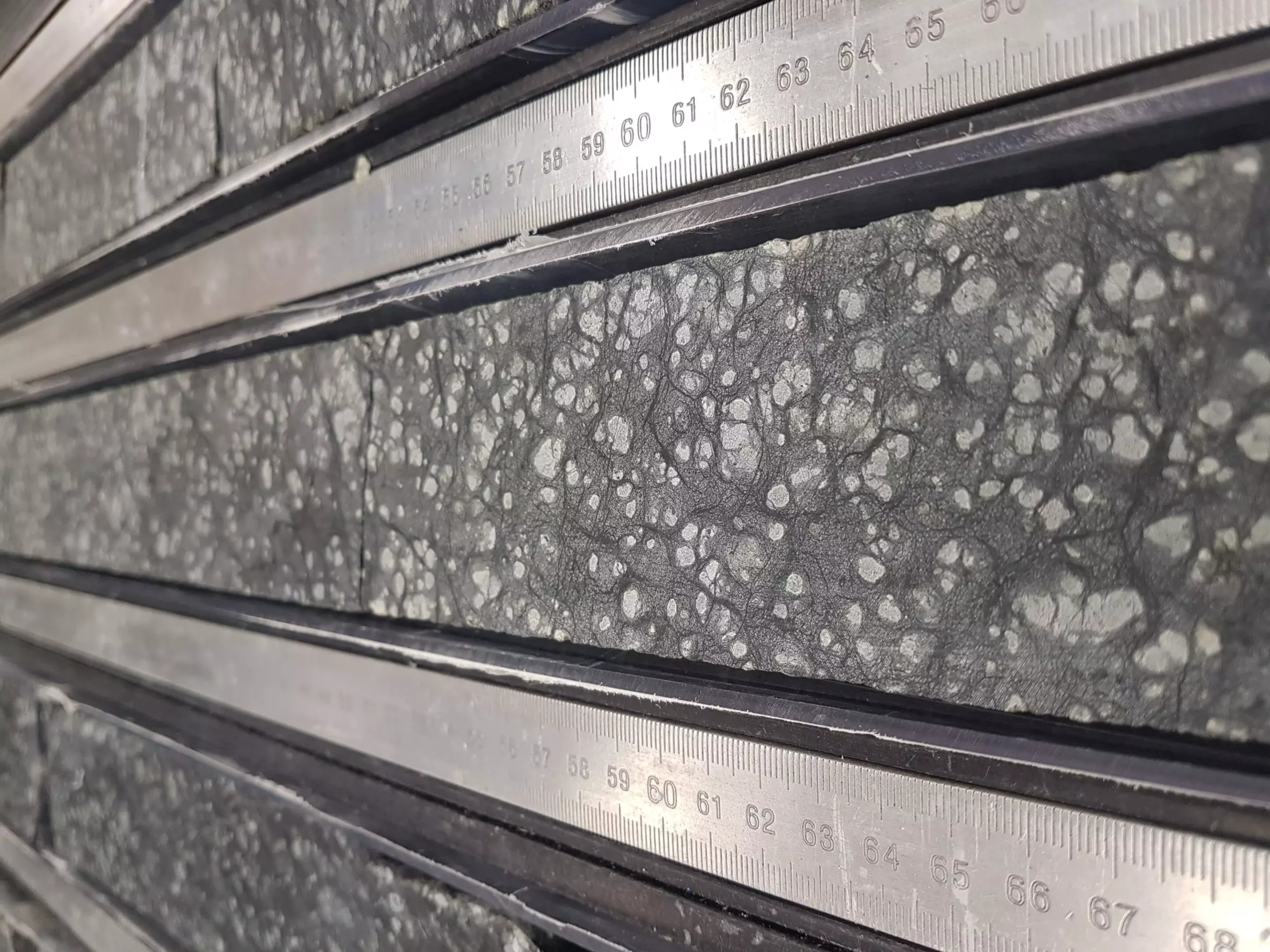

Scientists have recently made a groundbreaking discovery by recovering the first extensive section of rocks from the Earth’s mantle, the layer situated below the crust. This remarkable find is set to revolutionize our understanding of the Earth’s composition and the processes that shape our planet. The recovered rocks, totaling an impressive 1,268 meters, were obtained from a unique location on the seabed known as a “tectonic window,” revealing a glimpse into the enigmatic depths of the Earth.
The recovery of these mantle rocks, achieved during Expedition 399 “Building Blocks of Life, Atlantis Massif” of the ocean drilling vessel JOIDES Resolution, marks a significant milestone in the field of Earth sciences. Led by the International Ocean Discovery Program, this endeavor has brought together researchers from over 20 countries to unlock the mysteries hidden beneath the Earth’s surface. The team’s dedication and perseverance have resulted in a remarkable achievement that will shape the course of future scientific exploration.
The analysis of the recovered mantle rocks, detailed in the paper “A long section of serpentinized depleted mantle peridotite” published in Science, has yielded unexpected findings. Lead author Professor Johan Lissenberg and his team from Cardiff University have uncovered a more complex history of melting within the rocks than previously anticipated. The high concentrations of magnesium and the absence of the mineral pyroxene point to extensive melting processes that have shaped the composition of these rocks over time.
The melting of the mantle rocks as they ascended towards the Earth’s surface has profound implications for our understanding of volcanic activity. By studying the channels through which magma was transported within the mantle, researchers hope to gain insights into the mechanisms that drive volcanism. This knowledge is essential for comprehending the formation of magma and its role in the Earth’s geodynamic processes.
One of the most intriguing aspects of the study is the discovery of how olivine, a prevalent mineral in mantle rocks, interacts with seawater to produce hydrogen and other molecules. This chemical reaction could have played a crucial role in the origins of life on Earth, providing a source of fuel and favorable conditions for the development of early life forms. Dr. Susan Q Lang of the Woods Hole Oceanographic Institution emphasizes the importance of these findings in elucidating the conditions that existed on early Earth and their potential influence on the evolution of life.
The international team of scientists involved in Expedition 399 is committed to furthering their research on the recovered mantle rocks. With over 30 researchers from various disciplines collaborating on this project, the insights gained from this groundbreaking discovery will continue to fuel investigations into a wide range of scientific questions. Dr. Andrew McCaig of the University of Leeds acknowledges the collective effort and dedication that has led to this momentous achievement, setting the stage for future advancements in our understanding of the Earth’s complex processes.
The recovery of these mantle rocks marks a significant breakthrough in our explorations of the Earth’s interior. By unraveling the mysteries hidden within the mantle, scientists are paving the way for a deeper understanding of the planet’s origins and evolution. This discovery heralds a new chapter in Earth sciences, where the secrets of the deep Earth are gradually being unlocked, offering valuable insights into the forces that shape our world.
Rogue waves have long been a subject of fascination and terror in maritime lore. These…
As the world grapples with public health challenges, especially those posed by infectious diseases, the…
The Sombrero Galaxy, also known as Messier 104, embodies a breathtaking blend of spirals and…
In recent advances in quantum electronics, a groundbreaking discovery leveraging the concept of kink states…
In the intricate tapestry of nature, ice often exists in a delicate balance with liquid…
In an astonishing event that captured global attention, a rogue object from beyond our Solar…
This website uses cookies.